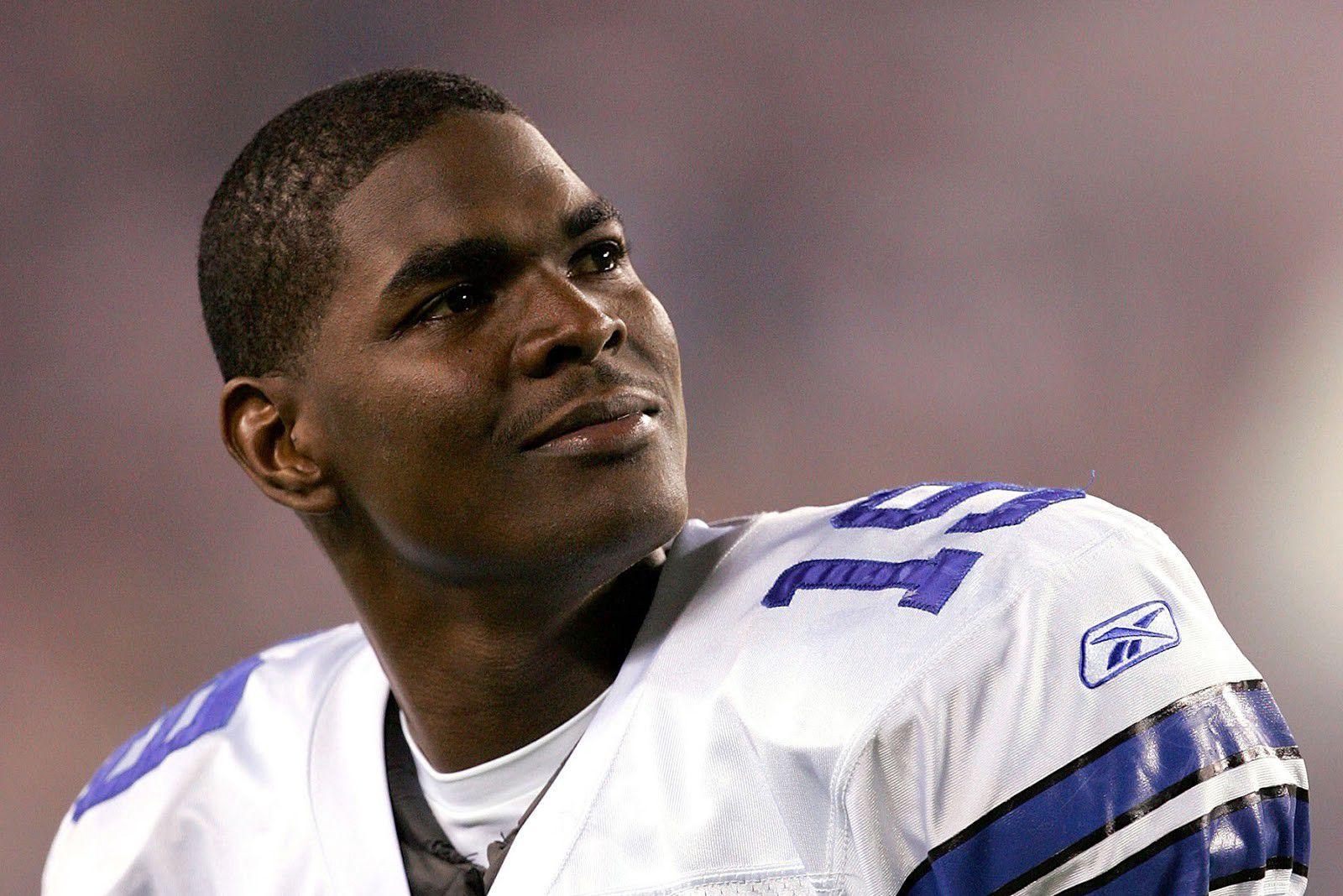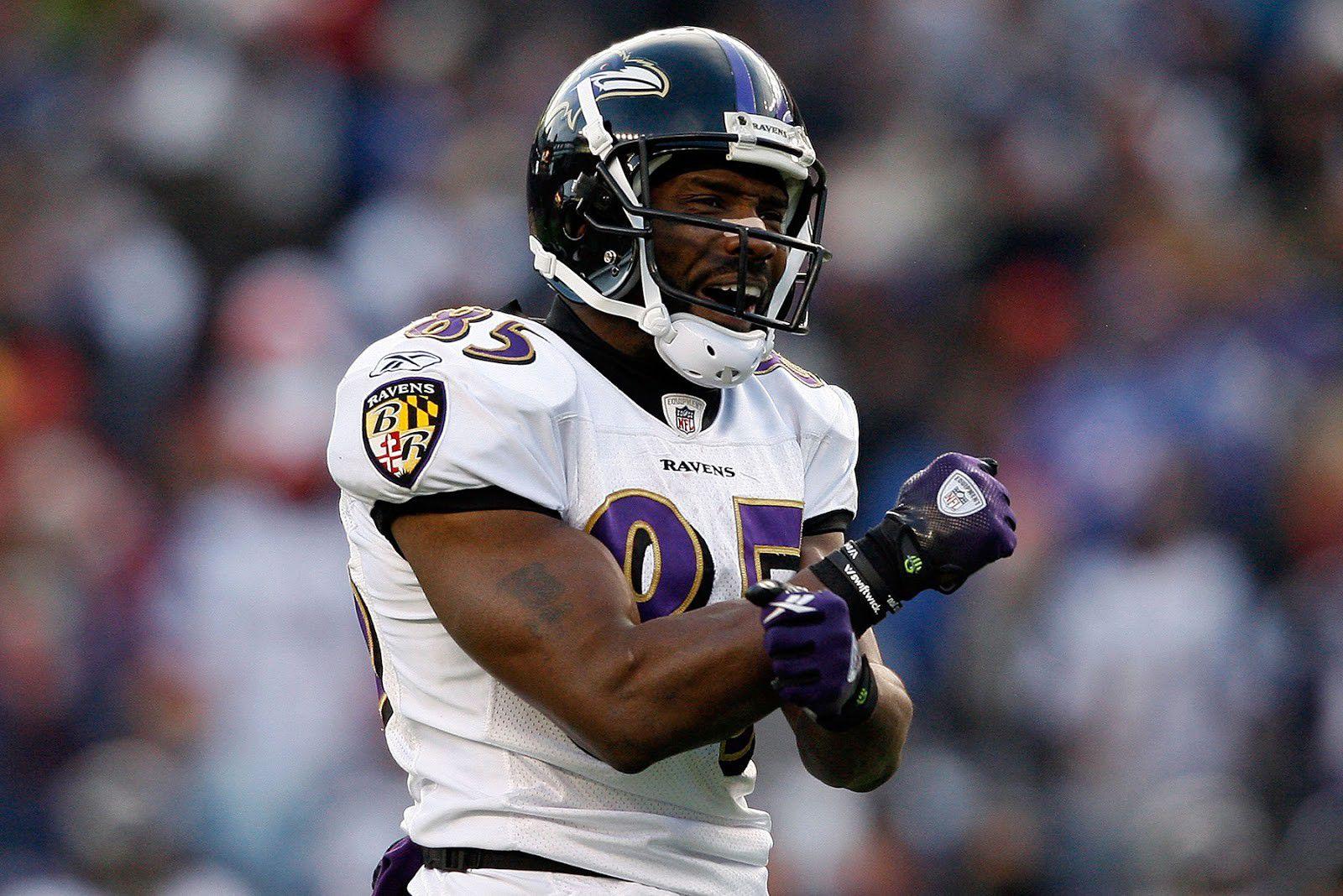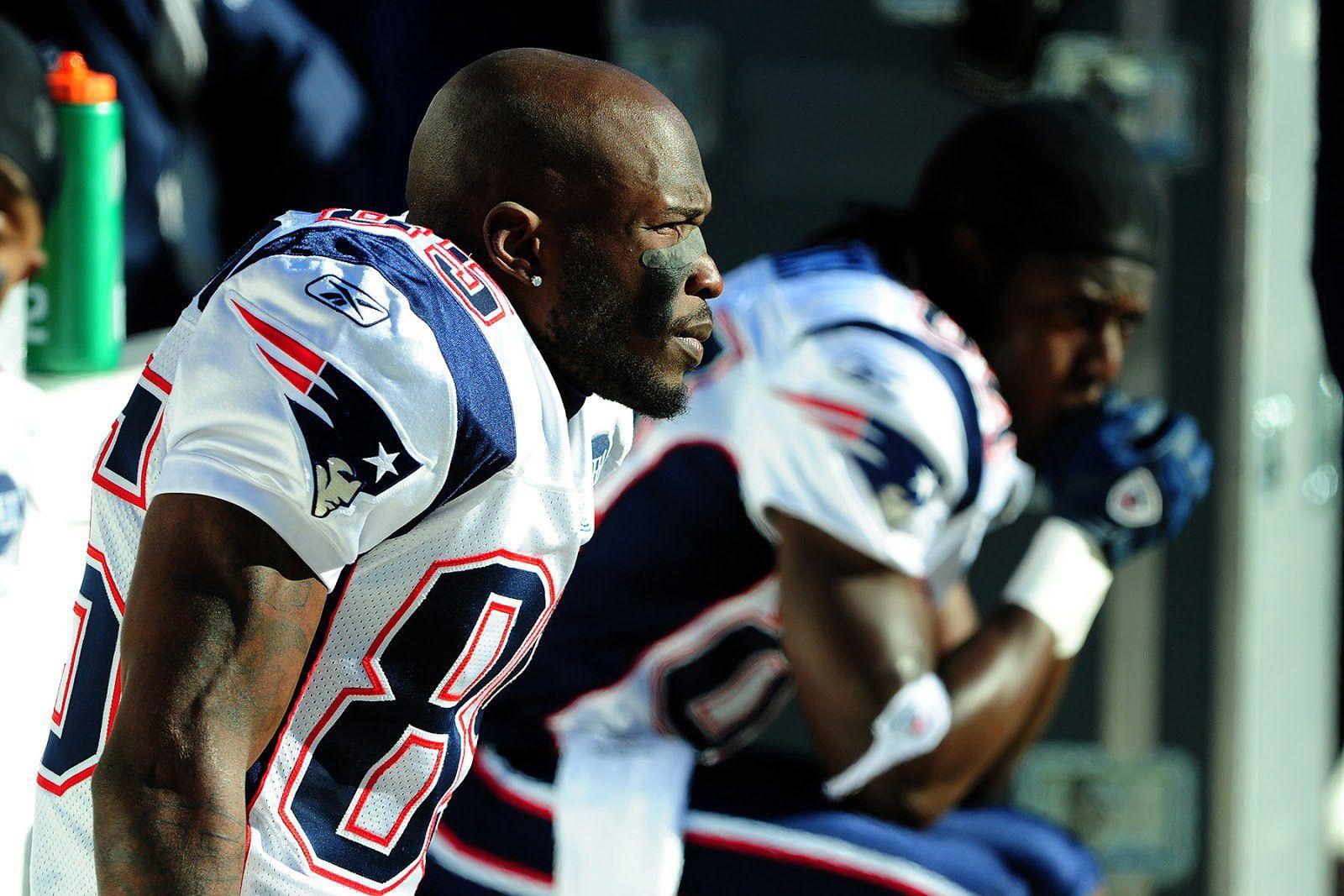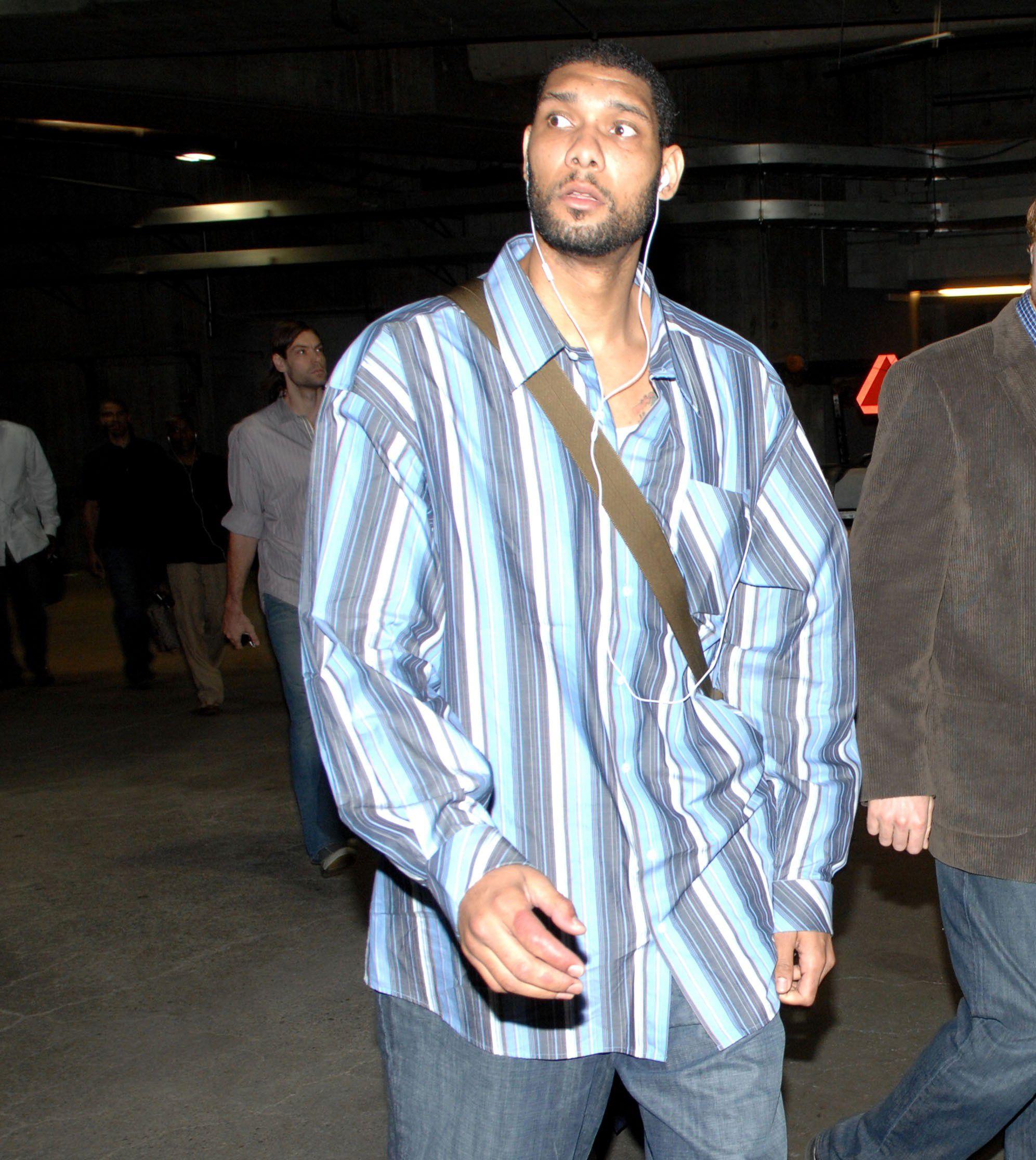After he signed a one-year deal with the Titans on Sunday, Eric Decker’s career sits at a crossroads.
The 6-foot-3, 214-pound pass catcher could continue on as one of the game’s premier touchdown makers and the go-to guy in Tennessee’s burgeoning pass offense under quarterback Marcus Mariota. Decker could remain the same guy that, over the past five years, has been on the receiving end of 43 touchdown passes, a number eclipsed by just four players — Dez Bryant (52 touchdowns), Antonio Brown (48), Brandon Marshall (48), and Demaryius Thomas (46). He could be the same player that’s one of just 11 receivers in the past decade — joining Bryant, Brown, Marshall, Thomas, Odell Beckham Jr., A.J. Green, Rob Gronkowski, Jimmy Graham, Larry Fitzgerald, and Jordy Nelson — with three or more seasons with double-digit touchdown totals.
Or Decker could find himself on a steep decline. He turned 30 in March, a scary benchmark for NFL players and a number that’s traditionally associated with massive tail-offs in productivity, particularly at the skill positions where quick-twitch speed and explosive athleticism are major calling cards. Not only is the NFL a young man’s game, but Decker comes to Tennessee after missing all but three games last year while recovering from hip and shoulder surgeries.
We can look to history for some context. How much success have other 30-plus, upper-echelon pass catchers found after changing teams to play in new schemes with new quarterbacks?
Jerry Rice (2001)
The former 49ers great set the standard for longevity when he joined the Raiders in 2001 at the age of 39. In the 16 seasons prior, Rice had already proven himself the best ever, putting up 12 seasons with 1,000-plus receiving yards (including 11 straight at one point), nine seasons with double-digit touchdowns (he led the NFL in receiving scores six times), and 10 first-team All-Pro appearances in San Francisco. And he wasn’t even done. In his first year in Oakland, Rice teamed up with Rich Gannon to catch 83 passes for 1,139 yards and nine touchdowns, then went over 1,000 yards again in 2002 at the age of 40.
Of course, you don’t reach GOAT status for being common, and there aren’t many human beings that could ever match Rice’s ability to fool corners, create separation, and catch everything that came his way. His ability to play well past his 40th birthday was anything but typical, but as a handful of top receivers that came along after Rice showed, finding success with late-career moves isn’t that rare.
Keyshawn Johnson (2004)

In March 2004, Tampa Bay traded the 32-year-old Johnson to the Cowboys for receiver Joey Galloway. Prior to that, the former Jets and Buccaneers pass catcher had posted four seasons with 1,000-plus yards, four seasons with eight-plus touchdowns, and had been named to the Pro Bowl three times. In his first season for Dallas, he teamed up with quarterback Vinny Testaverde to grab 70 catches for 981 yards and six touchdowns, then in 2005, running routes for new quarterback Drew Bledsoe, led the team with 71 receptions. He finished out his career in Carolina in 2006, catching 70 more balls for 815 yards and four touchdowns.
Much of Johnson’s longevity and later-career success can be attributed to his excellent body control, dependable hands, physicality, and shrewd route-running ability — he never needed to be faster than cornerbacks lining up across from him, just bigger and smarter.
Joey Galloway (2004)
The other half of the Johnson trade, the 33-year-old Galloway came to Tampa Bay via Seattle and Dallas with three 1,000-yard campaigns and two double-digit touchdown seasons on his résumé (all with the Seahawks). His numbers suffered that first year with the Bucs after he injured his groin in the season opener, finishing with just 33 catches for 416 yards and five scores in 10 games. But he re-signed with the team during the offseason at age 34 and began catching passes from a combination of Chris Simms (10 starts) and Brian Griese (six starts), logging his best season as a pro: 83 catches for 1,287 yards and 10 scores. He followed that up with two more 1,000-yard campaigns, catching passes from a mishmash of quarterbacks like Bruce Gradkowski, Simms, Tim Rattay, Jeff Garcia, and Luke McCown, and became the first player in Tampa Bay franchise history with three-straight 1,000 yard receiving seasons.
Galloway was able to overcome mostly bad quarterback play with one important, defining characteristic: blazing speed. All the way up until the end of his career, he was considered a top defense-stretching threat.
Terrell Owens (2004)
In a complicated and confusing sort-of trade that involved the Eagles, Niners, and Ravens, Owens was off to Philly in 2004 at the age of 31. The mercurial playmaker had previously posted five 1,000-plus yards receiving campaigns in San Francisco and four seasons with 10-plus touchdowns (he led league in scores in 2001 and 2002). In his first campaign with the Eagles, Owens teamed up with Donovan McNabb to catch 77 passes for 1,200 yards and 14 touchdowns. A broken fibula, suffered late in the year, couldn’t keep Owens from playing in Super Bowl XXXIX, and he caught nine passes for 122 yards in a losing effort to the Patriots.
Owens feuded with McNabb, fought with coaches, and squabbled with management about a new contract the following offseason and training camp, though, and was active only seven games in 2005 before the team suspended, then later deactivated him for the rest of the year. After being released, Owens signed on with Jerry Jones in Dallas, and, paired with Tony Romo, went on to post three-straight 1,000-yard-plus, 10-plus-touchdowns seasons.
Despite consistent off-field drama, few players in league history can match Owens’s physical gifts — and combined with a famously rigorous offseason training regimen, the talented receiver was able to outrun Father Time for much longer than any normal human being could.
Derrick Mason (2005)

After posting four straight seasons of 1,000-plus yards with the Titans and averaging 86 catches and seven touchdowns a year, a 31-year-old Mason signed with the Ravens for the 2005 season. In his first year with Baltimore, he paired up with quarterbacks Kyle Boller (nine starts) and Anthony Wright (seven starts) to catch 86 balls for 1,073 yards and three scores. Over the next five years, which spanned from his age-32 season to his age-36 season, he caught passes from Boller, Steve McNair, Troy Smith, and Joe Flacco, and went over 1,000 yards three times while averaging 77 catches a year.
For Mason, it was preternatural shiftiness in space that helped him build such a long and consistently productive career as a pass-catcher — he racked up 12,061 receiving yards in 15 seasons — and that rare elusiveness helped him gain over 5,000 return yards in his career as well.
Randy Moss (2007)
The Patriots traded a fourth-round pick to the Raiders in 2007 to acquire the then-30-year-old Moss, a player that had, in nine seasons in the league, racked up 1,000-plus yards seven times, 10-plus touchdowns six times (he led league in 1998, 2000,and 2003), and been named first-team All-Pro three times. It was an incredible steal for New England, as Moss became part of one of the most devastating offenses of all time, pairing up with Brady to catch 98 passes for 1,493 yards and 23 touchdowns (his fourth time leading the league in touchdowns, and still the record for most scores in a single season). Moss caught another 69 passes for 1,008 yards and 11 TDs at the as a 31-year-old in 2008, then added another 83 balls for 1,264 yards and 13 scores in 2009 (again leading the league). The future Hall of Famer broke the mold for what a person his size should have been able to do — mixing length, speed, agility, and hands — and it was a combination that helped him extend his career well into his 30s.
You just aren’t going to find many receivers that could do this against the best cornerback in the NFL:
T.J. Houshmandzadeh (2009)
Prior to signing a five-year, $40 million contract with the Seahawks in 2009 at age 32, Houshmandzadeh was coming off of a stretch of five straight seasons with 70-plus catches and 900-plus yards, which included a league-leading 112-catch year in 2007. Paired with Matt Hasselbeck in Jim Mora’s lone season as head coach in Seattle, “Housh” led the Seahawks with 79 receptions and 911 yards in 2009 while finishing tied for second on the team with three touchdown catches. Houshmandzadeh was a victim of Pete Carroll’s massive rebuild effort that started in 2010, and ended up in Baltimore. His production fell off a cliff as his quickness in and out of his breaks waned: He ended up with just 30 catches for 398 yards and three touchdowns that season, and in his final year in the league, as a 34-year old in Oakland in 2011, he caught just 11 passes for 146 yards and one touchdown in nine games. By that time, Houshmandzadeh was a shell of his former self physically, and didn’t have the size or strength to get open consistently.
Anquan Boldin (2010)
After three Pro Bowls, two 100-plus catch campaigns, and five 1,000-plus yard seasons in his seven years for the Cardinals, Arizona traded the then-30 year-old Boldin and a fifth-round pick to the Ravens for third- and fourth-round selections. Over the next three seasons in Baltimore, he reeled in 186 passes for 2,645 yards and 14 touchdowns (an average of 62 catches for 882 yards and five scores a year).
Facing cap constraints and anticipating the end of the line for an aging pass catcher that never was all that fast to begin with, the Ravens traded Boldin to the team he’d just helped beat in Super Bowl XLVII. With extraordinary physicality and a rare ability to box out defenders with his body, Boldin spent the next three years (his age-33, -34, and -35 seasons) ambling around the field while hauling in 237 passes for 3,030 yards and 16 touchdowns for San Francisco. The wily vet then signed in Detroit last year, and just kept on with his Energizer Bunny impression. Paired up with Matt Stafford, the 36-year old caught 67 passes and had eight scores.
Chad Johnson (2011)

In 10 seasons spanning from 2001 to 2010, Chad Johnson averaged 75 catches, 1,078 yards, and seven touchdowns a year for the Bengals en route to six Pro Bowl selections and two All-Pro nods. But in July 2011, Johnson had worn out his welcome in Cincinnati and owner Mike Brown sent him to the Patriots in exchange for fifth -and sixth-round picks. Ochocinco’s trademark quickness and speed were all for naught in New England, where he struggling to pick up the Patriots offensive system and failed to develop any chemistry with Brady. He caught just 15 passes for 276 yards in 15 games, adding a 21-yard reception in New England’s Super Bowl XLVI loss to the Giants, before being released after one year.
Wes Welker (2013)
When Welker shocked the world by signing with Denver in March 2013, the then-soon-to-be-32 year-old was on the heels of a prolific six-year span. From 2007 to 2012, the shifty slot receiver had caught a ridiculous 672 passes, led the league in catches three times, gone over 110 catches five times, and averaged 1,243 yards and six touchdowns per year. But he was also going from one of the best quarterbacks all time in Brady to another in Peyton Manning. His first year in Denver didn’t disappoint: Welker caught 73 passes for 778 yards and 10 touchdowns in the most prolific scoring offense ever.
Welker’s role, and production, diminished in 2014 due to a series of concussions and a four-game suspension for a banned substance. At age 33, he caught 49 balls for 464 yards and two scores for the Broncos, but without the same quickness over the middle, he just wasn’t as dangerous.
Steve Smith Sr. (2014)
Smith signed with the Ravens in 2014 at the age of 35 after spending 13 seasons in Carolina. In his Panthers career, Smith topped 1,000 yards seven times, went to the Pro Bowl five times, and was named All-Pro twice. The feisty playmaker didn’t disappoint for the Ravens: In his first season with the club, Smith paired up with Flacco to catch a team-high 79 passes and 1,065 yards, adding six touchdowns, and caught another 46 passes for 670 yards and three touchdowns in seven games before tearing his Achilles tendon in 2015. He came back for an encore in 2016, and in his age-37 season, caught 70 passes for 799 yards and a team-high five touchdowns in 14 games before announcing his retirement at the end of the year.
There’s just no emulating the pure ferocity that Smith played with on every snap, and it was that unconquerable aggressiveness that made the 5-foot-9, 195-pound playmaker effective right up until he retired.
Andre Johnson (2015)
In 12 years with the Texans, Johnson topped 1,000 receiving yards seven times (leading the league in yards twice) and racked up five seasons with 100-plus catches (leading the league in that category twice). But in 2015, at age 34, after being told he wasn’t part of Houston’s plans on offense, Johnson sought and was granted his release. He signed with the Colts for three years, $21 million, but despite being matched up with one of the best young quarterbacks in the game in Andrew Luck, he never took off in Indianapolis. Luck started just seven games that year due to various injuries, and was replaced by a 40-year-old Hasselbeck; Johnson finished fourth on the team in receptions (41), and third in yards (503) and touchdowns (four). Johnson, who for years was bigger, faster, and stronger than everyone he went up against, just didn’t have the physical advantage anymore, and never really adjusted to the Indianapolis passing game.
Brandon Marshall (2015)

When the Jets traded a fifth-round pick for Marshall and a seventh-rounder in spring 2015, they picked up a talented playmaker that had posted 1,000-plus yard seasons in seven of the previous eight seasons and racked up 100-plus catches five times. In his first season with New York, the 31-year-old Marshall teamed up with Ryan Fitzpatrick to catch 109 passes for 1,502 yards and a career-high and league-leading 14 touchdown grabs — part of the same passing game that doled out 12 touchdowns to Decker. The Jets’ offensive magic wore off in 2016 as Fitzpatrick regressed, Marshall struggled with drops, and Decker got hurt, and a 32-year-old Marshall finished with just 59 catches for 788 yards and three scores before becoming a free agent.
Now 33, Marshall has signed on for a two-year, $12 million contract with the Giants, and the next chapter of his career will be written.

Every case is different, but many of the top-tier receivers from this list that have changed teams after turning 30 years old have gone on to produce at a high level in new schemes and in new uniforms. For a few, success was always a given — especially for all-time talents like Moss, Rice, and Owens, who would have thrived anywhere. Those three also ended up in ideal situations: Moss found the perfect fit in New England, playing with an offensive genius in Bill Belichick and one of the best passers of all time in Brady, while Rice and Owens had the advantage of playing with talented quarterbacks late in their careers in Gannon, and McNabb and Romo, respectively.
Others had to overcome underwhelming quarterback situations — Galloway, Mason, and even Boldin and Smith (sorry, Flacco) certainly did — but continued to produce at a high levels as retirement age crept in.
No one’s going to compare Decker’s physical talents to Moss’s or Owens’s, and he’s nowhere near the route runner that Rice was. But as he passes the 30-year age threshold, Decker combines a few of the talents that his successful late-career predecessors possessed that could allow him to remain effective even if he’s lost a step: Like Johnson, he understands how to find the soft spot in coverages, and like Boldin, knows how to utilize his size and physicality to win at the catch point. Assuming he can stay on the field in 2017, he’s found himself in a great situation to produce, paired with one of the league’s best young quarterbacks and an up-and-coming passer in Mariota. All the Titans probably had to do to persuade him to sign was to just show him this Mariota throw on a loop:
Tennessee provides a target rich environment devoid of a true no. 1 pass-catching threat. Head coach Mike Mularkey can devise plenty of ways to utilize Decker over the middle of the field, where he’s most dangerous.
“It was kind of a perfect storm,” said Decker after signing. “You only get so many years to play this game, and I wanted to find the right fit.”
Playing opposite Rishard Matthews or rookie Corey Davis, Decker should see plenty of action, and by replacing second-year pass catcher Tajae Sharpe in many of Tennessee’s looks, he should provide Mariota a more dependable, savvy pass catcher downfield. It wouldn’t be too surprising if the squad that ranked ninth per Football Outsiders pass offense DVOA last year shoots into the top five in 2017.
